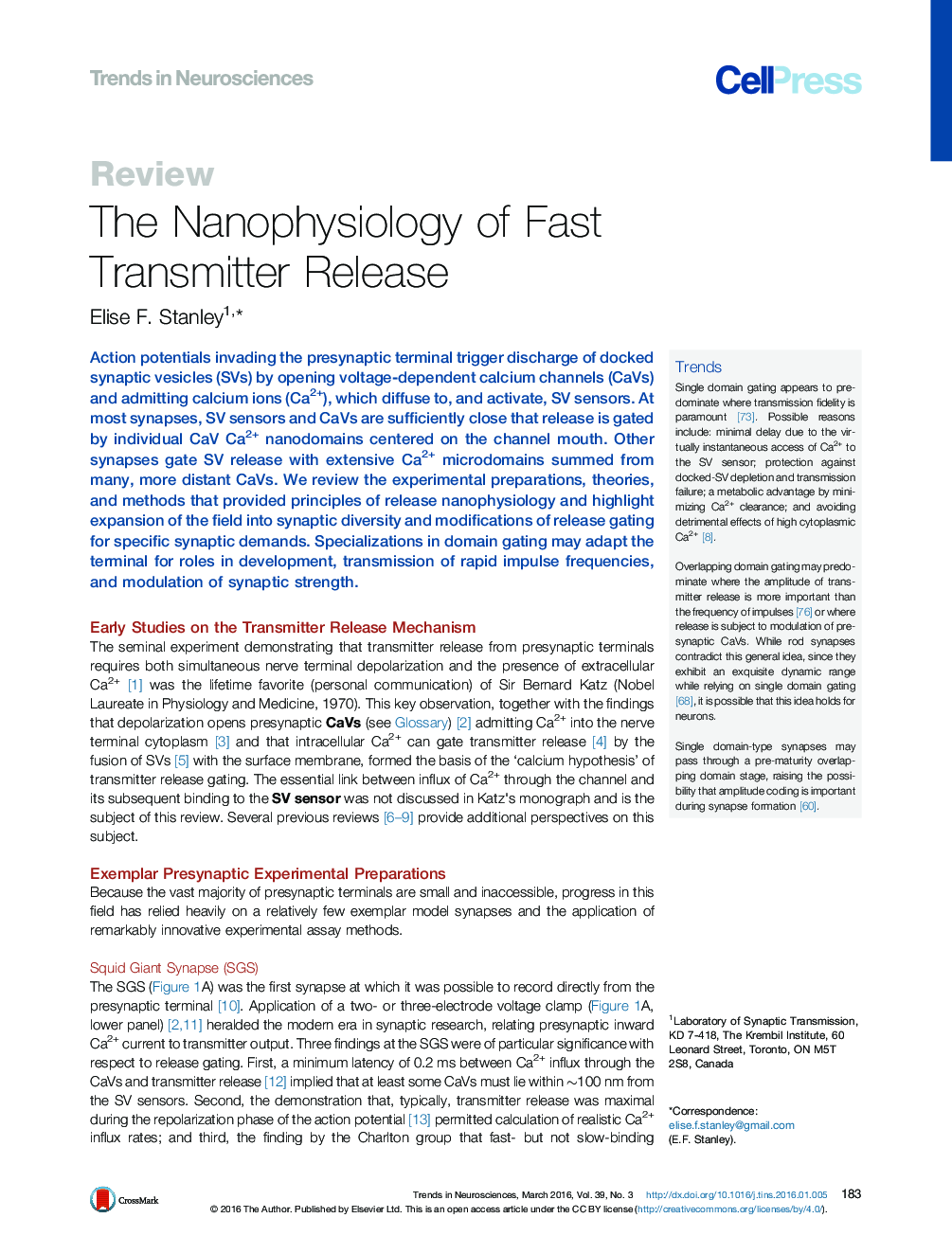| Article ID | Journal | Published Year | Pages | File Type |
|---|---|---|---|---|
| 6286700 | Trends in Neurosciences | 2016 | 15 Pages |
Abstract
Action potentials invading the presynaptic terminal trigger discharge of docked synaptic vesicles (SVs) by opening voltage-dependent calcium channels (CaVs) and admitting calcium ions (Ca2+), which diffuse to, and activate, SV sensors. At most synapses, SV sensors and CaVs are sufficiently close that release is gated by individual CaV Ca2+ nanodomains centered on the channel mouth. Other synapses gate SV release with extensive Ca2+ microdomains summed from many, more distant CaVs. We review the experimental preparations, theories, and methods that provided principles of release nanophysiology and highlight expansion of the field into synaptic diversity and modifications of release gating for specific synaptic demands. Specializations in domain gating may adapt the terminal for roles in development, transmission of rapid impulse frequencies, and modulation of synaptic strength.
Related Topics
Life Sciences
Neuroscience
Neuroscience (General)
Authors
Elise F. Stanley,
